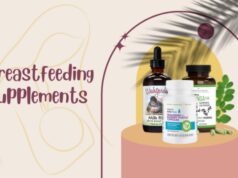Breastfeeding mothers often have a lot of doubts about various things related to nursing. For example, which position is best for the baby, how long breastfeeding sessions should last, what foods should be eaten to make the baby healthier, etc. Perhaps most questions are asked about nutrition because moms sometimes give up favorite foods during pregnancy. However, when a baby is born, then there is a big dilemma as to whether you should continue to avoid certain foods or you can eat them again. A great example is caffeine and foods that contain it.
Namely, some moms avoid caffeine and food (chocolate) and drinks (soda, coffee, tea) rich in this white crystalline purine during pregnancy. But when a baby is born, caffeine consumption is a big dilemma. Is caffeine harmful, can it be found in breast milk if the mother consumed it, how does this compound affect the baby? Below we will try to answer these in as much detail as possible, as well as some other questions related to the compatibility of breastfeeding and caffeine. Well, if you’re ready, let’s get started.
Caffeine and Breastfeeding-Is it safe?

The fact is that we all drink coffee. Okay, maybe not everyone, but the vast majority. Moms are no exception. Morning coffee is a routine of many people, however, moms sometimes give up these drinks due to pregnancy. Considering that coffee or other beverages and foods with caffeine content will negatively affect the baby even before it is born, moms stop consuming them.
However, when a baby is born, the question is whether there is a danger of consuming foods rich in caffeine and whether in any way they can harm the baby’s health? In short, the answer is no! Coffee, soda, tea, chocolate or any other food cannot harm the baby and his/her health in any way.
Namely, even though certain research and studies have confirmed the presence of this compound in breast milk, and thus later in the baby’s body, this percentage of caffeine cannot be considered harmful. There is simply no danger of consuming it.
Empirical experiences have shown that babies can become irritable, awake, or hyperactive, but this can be a consequence because the mother did not ingest products rich in caffeine during pregnancy. For example, if you drank coffee during pregnancy, it is unlikely that the baby will behave as described above and be more sensitive.
The advice if your baby develops increased irritability or alertness is to try to reduce your daily intake of coffee, chocolate, soda or any other food that is indicated to have caffeine. By doing so, it is very likely that your baby will be calm and serene.
Of course, everything we have said so far primarily refers to the normal amounts of intake of all the mentioned foods on a daily basis, so not too much of any of these.
Experts agree that there is a certain amount of caffeinated foods that you can ingest on a daily basis. It is considered that these amounts are recommended and of course it is not harmful if you take something more or less than these values. More on that below.
How much caffeine is recommended to take in per day?

So, as we mentioned earlier, experts in the field of care for newborns and babies agree on consuming caffeinated foods. Generally speaking, moms are advised to take between 200 and 300 mg of caffeine daily. This amount is completely normal and will not cause any problems in the baby or cause any significant changes in breast milk.
One of the organizations that presented its studies and recommended values is the American College of Obstetricians and Gynecologists (ACOG). According to them, it is best to consume about 200 mg of caffeine, which is equal to two small cups of coffee, tea or some other beverage.
La Leche League International is also a non-governmental, non-profit organization that is specifically focused on caring for and helping moms who need advice on infant care. Their recommendation is a slightly higher daily amount of caffeine, more precisely 300 mg. Centers for Disease Control and Prevention (CDC) experts share the same opinion.
The caffeine content in certain foods that we use every day

We have mentioned several times before that caffeine is a compound found in both drinks and food. The fact is that caffeine is most often ingested through coffee. Therefore, if you want to adhere to the recommended limits (200-300 mg), then it is definitely advisable to know the caffeine content in the foods we use every day.
For example, since coffee is the most common product, we must point out that filter coffee contains as much as 140 mg of caffeine, while instant coffee has a slightly lower percentage (200 mg). When it comes to tea, this drink has only 75 mg of caffeine. If you pick 250 ml energy drink, there are about 80 mg of this compound. It is important to note that one cola drink of 354 ml has up to 40 mg of caffeine.
When it comes to food, chocolate bars are most often consumed. If we take 50g of chocolate into consideration, the portion of caffeine is about 50 mg. It is interesting to mention caffeinated chewing gum, as well as coffee ice cream as products that also contain a certain percentage of caffeine.
What foods can you use to replace caffeinated drinks

Just as there are various products on the market with caffeine content, there are also those without it. For example, decaffeinated coffee or tea comes to mind at this point. We must note that these actually have a certain percentage of caffeine, but it is significantly lower compared to non-caffeine-free products (usually 2-5 mg).
As for teas, herbal teas generally have a lower caffeine content or no caffeine at all. Also, there are some herbal teas that contain caffeine, such as redbush tea.
It is interesting to say that you can lower the caffeine content of tea by brewing it for a shorter period of time (e.g. 1 minute). In this way, the content can be reduced by up to 40 percent.









